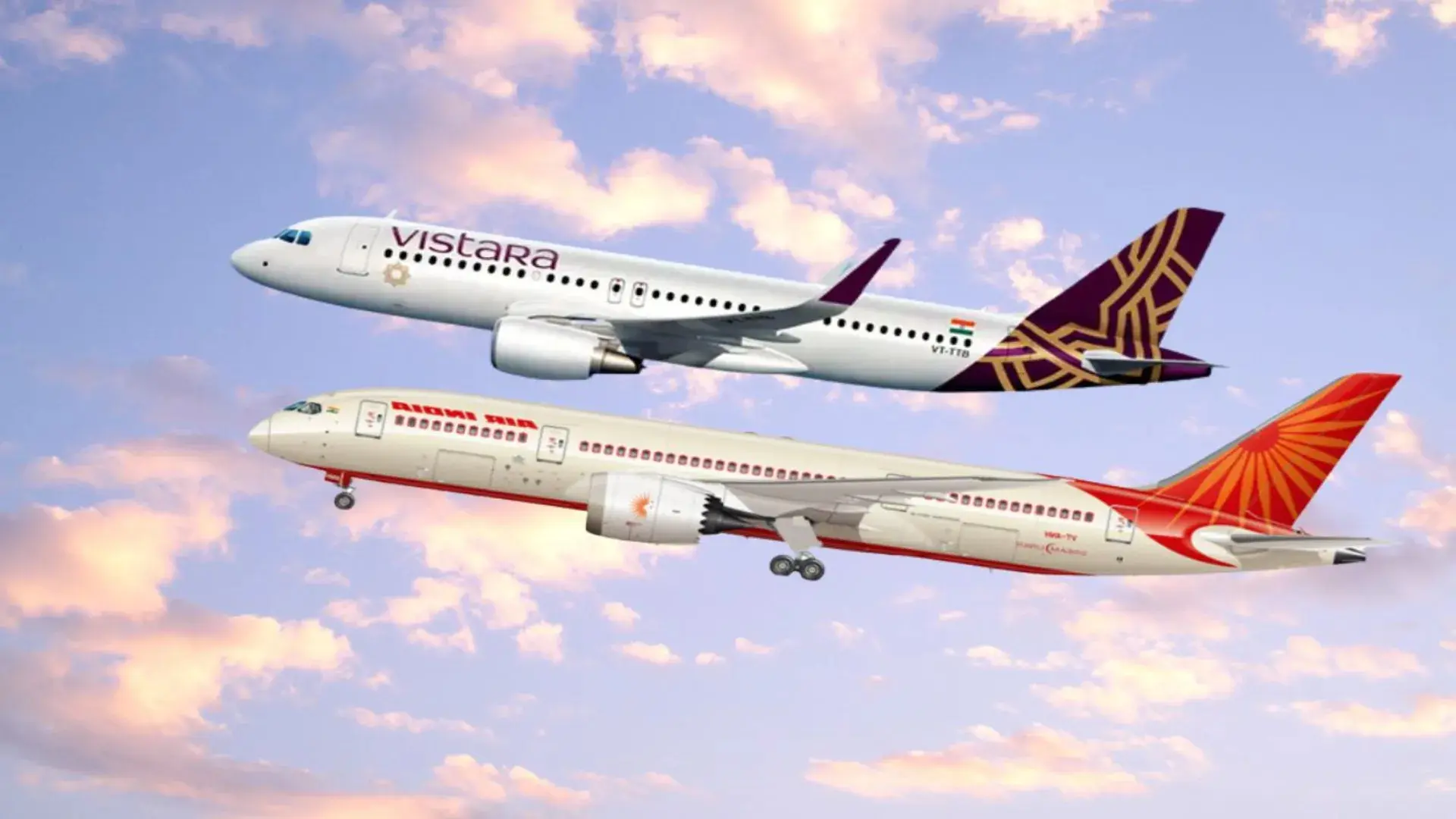The recent Supreme Court ruling to liquidate Jet Airways has profound consequences for India’s aviation landscape, particularly in the context of the ongoing merger between Air India and Vistara. The merger, which aims to consolidate Air India and Vistara into one of India’s largest airlines, could face both opportunities and challenges as the industry undergoes a major transformation. With Jet Airways now out of the competitive field, the landscape is shifting, and the merged entity will need to navigate this changing environment carefully to emerge as the dominant force in the Indian aviation market.
Reduced Competition: Opportunities For Air India-Vistara
The liquidation of Jet Airways removes a key competitor from the domestic airline industry, which will likely have a significant impact on market dynamics. Once a major player in both domestic and international flights, Jet Airways’ removal will reduce the number of airlines competing for the same routes and market share. This opens up space for the merged Air India-Vistara entity to capture a larger share of both domestic and international travelers.
With the combined resources of Air India and Vistara, this larger entity will have a strengthened capacity to expand its routes, provide more frequent services, and offer enhanced customer experiences. It will now have the chance to dominate the full-service airline space, especially on long-haul international routes where Jet Airways had once competed aggressively.
However, while the reduced competition could be seen as an advantage for the merged airline, there is also a risk of overconsolidation. If Air India and Vistara monopolize too many routes, it could reduce consumer choices and increase ticket prices. Regulatory oversight will be crucial in ensuring that the merger does not lead to anti-competitive practices.
Air India-Vistara Merger: Operational Synergies And Challenges
As Air India and Vistara move toward integration, the liquidation of Jet Airways removes a significant player that might have otherwise competed for certain routes, fleets, and airport slots. For the new entity, this could simplify the operational landscape in terms of managing air traffic, especially when it comes to resource allocation such as gates, slots, and airspace rights.
However, the integration process itself will still pose challenges. Merging the operations of two airlines, each with its own fleet, systems, and operational protocols, is never a straightforward task. The airlines will need to address complex issues related to fleet management, staff integration, and technology unification. For example, Air India’s older fleet could be supplemented by Vistara’s newer, more modern aircraft, but this will require careful management to ensure that the combined airline has a fleet that is both competitive and efficient.
Moreover, both Air India and Vistara operate in different segments of the market, with Vistara being known for its premium services and Air India having a wider, more budget-conscious customer base. Merging these brands into a cohesive unit will require a clear strategy that addresses the needs of both premium and economy passengers, with seamless transitions between the two offerings.
Frequent Flyer Program Integration: Club Vistara and Flying Returns
A key aspect of the Air India-Vistara merger is the integration of their respective frequent flyer programs: Club Vistara (CV) and Flying Returns. As part of the merger, members of both programs will see their points transferred to Flying Returns, ensuring a smooth transition for loyal customers.
For frequent flyers, this means that all Club Vistara points will be converted to Flying Returns points on a 1:1 basis. Importantly, these points will not lose value during the transfer, and any points due to expire will remain valid for at least one year after the migration. Additionally, existing tier statuses (Silver, Gold, Platinum) will be retained, so flyers won’t lose any benefits associated with their loyalty status.
Perhaps most beneficial is the fact that the points from both Club Vistara and Flying Returns will be combined to determine the member’s final tier status. This could lead to an upgrade for some frequent flyers, especially if their combined points from both programs push them over the threshold for a higher tier. For instance, if a member has a significant balance of points in both programs, they could see themselves moved up to a higher tier such as Platinum from Gold, further increasing their access to premium benefits such as priority boarding, lounge access, and reward flights.
Moreover, unused upgrade vouchers and complimentary flight tickets from Club Vistara will also be transferred to Flying Returns. These vouchers will retain their validity, but they will now be usable on the expanded route network of the merged airline, which will likely cover more destinations and offer greater flexibility.
Financial and Operational Impact: Jet Airways Liquidation
The liquidation of Jet Airways could have a significant financial and operational impact on the aviation sector. Jet Airways, once a major competitor to Air India, had been grounded in April 2019 due to financial insolvency and had been undergoing a resolution process ever since. However, its failure to meet the conditions laid out in the resolution plan, including non-payment of dues, led the Supreme Court to invoke its powers under Article 142 to liquidate the airline.
From a financial perspective, the liquidation of Jet Airways opens up space for Air India and Vistara to capture more customers, expand their services, and gain market share. This is particularly true on international routes where Jet Airways had been a major player. With Jet Airways now out of the picture, the merged Air India-Vistara entity will be in a stronger position to negotiate bilateral agreements with foreign governments and expand its footprint globally.
However, the financial strain caused by the liquidation may also lead to some turbulence in the market. Jet Airways had a significant amount of debt, and the liquidation process is expected to result in the loss of jobs, as well as challenges for creditors. While the merger between Air India and Vistara is financially backed by the Indian government, there will still be operational costs associated with absorbing Jet’s market share and integrating additional resources, such as aircraft and airport slots, into the merged airline’s fleet.
Legal and Regulatory Considerations for the Merger
The merger between Air India and Vistara, along with the liquidation of Jet Airways, is likely to come under the scrutiny of the Competition Commission of India (CCI) and other regulatory bodies. The CCI will assess whether the merger would result in a monopoly in certain sectors, particularly on lucrative international routes, and whether it would reduce consumer choice or increase prices.
At the same time, the liquidation of Jet Airways, which had been part of a long legal process, could also lead to changes in how regulatory authorities manage the restructuring and dissolution of airlines in the future. As the aviation sector adjusts to these changes, regulatory bodies will need to balance the need for consolidation with ensuring that the market remains competitive and accessible to consumers.
Long-Term Implications: Creating a Dominant National Carrier
With Jet Airways now in liquidation and Air India and Vistara set to merge, the Indian aviation market is on the brink of a new era. The combined entity of Air India and Vistara will be well-positioned to take advantage of India’s growing travel market, both domestically and internationally.
In the long term, the merger could lead to the emergence of a dominant national carrier that could rival other international airlines. With a larger fleet, an expanded network, and a more cohesive service offering, Air India-Vistara could become a force to be reckoned with in global aviation. However, the success of the merger will depend on how well the airline manages the integration process, retains customer loyalty, and adapts to the rapidly evolving landscape of the aviation industry.
A New Chapter for India’s Aviation Sector
The liquidation of Jet Airways and the merger of Air India and Vistara are both transformative events in the Indian aviation industry. While the Jet Airways liquidation removes a major competitor, the combined force of Air India and Vistara presents a unique opportunity to reshape the airline market, offering better service, more extensive networks, and improved loyalty benefits for passengers.
Frequent flyers can look forward to the benefits of tier retention, the extended validity of their points, and the potential for upgrades. However, the industry will need to watch how the integration process unfolds, as operational challenges, regulatory scrutiny, and financial considerations continue to shape the future of India’s aviation sector. In the end, if the merger is successful, it could pave the way for India to have one of the world’s most competitive and customer-centric airlines.
Read More : Jet Airways Faces Liquidation As Supreme Court Invokes Article 142: What It Means For Creditors























